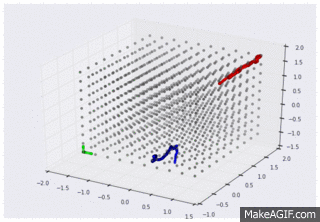Multi Class Logistic Regression

In the realm of machine learning, logistic regression stands as a foundational algorithm for classification tasks, capable of handling binary classification problems with ease. However, when it comes to multi-class classification problems, where we have more than two classes, the traditional logistic regression needs to be adapted. This is where multi-class logistic regression comes into play, extending the capabilities of logistic regression to scenarios involving multiple classes. In this comprehensive guide, we will delve into the intricacies of multi-class logistic regression, exploring its underlying mechanics, applications, and implementation strategies.
Introduction to Logistic Regression
Before diving into multi-class logistic regression, it’s essential to understand the basics of logistic regression. Logistic regression is a statistical method used for binary classification, where the goal is to predict one of two outcomes (e.g., 0 or 1, yes or no) based on a set of predictor variables. It works by learning the relationship between the features and the target variable, assuming a linear relationship in the log-odds (logistic) space. The output of logistic regression is a probability, indicating the likelihood of an instance belonging to the positive class.
Extending to Multi-Class Logistic Regression
In multi-class logistic regression, the objective remains somewhat similar, but instead of predicting one of two classes, the model predicts one out of multiple classes. To achieve this, there are primarily two strategies:
One-vs-Rest (OvR) Approach: In this approach, for a problem with (K) classes, (K) different binary logistic regression models are trained. Each model is trained to predict one class against all the other classes combined. For a new instance, each of the (K) models predicts the probability of belonging to its respective class, and the class with the highest predicted probability is chosen.
One-vs-One (OvO) Approach: This strategy involves training a binary classifier for every pair of classes. For (K) classes, this results in (K(K-1)/2) models. When a new instance is encountered, it is run through all these models, and each model contributes a vote for one of the two classes it was trained on. The class that receives the most votes across all models is selected as the predicted class.
Multinomial Logistic Regression: This is an extension of logistic regression that can handle multi-class classification directly, without the need to reduce it to multiple binary classification problems. It estimates probabilities using a softmax function, which is particularly useful for multi-class problems where classes are mutually exclusive.
Mathematical Formulation of Multinomial Logistic Regression
Given a dataset ({(x_1, y_1), (x_2, y_2), \ldots, (x_n, y_n)}) where (x_i) is the feature vector of the (i)-th instance, and (yi \in {1, 2, \ldots, K}) is the corresponding class label, the goal of multinomial logistic regression is to find the parameters (\beta{1:K}) that maximize the log-likelihood:
[ \ln L(\beta) = \sum{i=1}^{n} \ln \left( \frac{\exp(\beta{y_i}^T xi)}{\sum{j=1}^{K} \exp(\beta_j^T x_i)} \right) ]
Here, (\beta_j) represents the coefficients for the (j)-th class.
Implementation Strategies
Implementing multi-class logistic regression can be approached in several ways:
Using Libraries: Many machine learning libraries, such as scikit-learn in Python, provide built-in support for multi-class logistic regression through their implementation of OvR, OvO, or direct multinomial logistic regression.
Custom Implementation: For educational purposes or specific requirements, one might implement multi-class logistic regression from scratch. This involves calculating the softmax probabilities, estimating the parameters using an optimization algorithm like gradient descent, and handling predictions.
Neural Networks: Multinomial logistic regression can also be seen as a special case of a neural network with a softmax output layer. This perspective allows for the use of deep learning frameworks for multi-class classification tasks.
Applications and Use Cases
Multi-class logistic regression finds applications in various domains:
- Text Classification: Where documents or text snippets need to be classified into one of many categories.
- Image Classification: In tasks where images are to be classified into multiple categories, such as objects in a scene.
- Medical Diagnosis: For diagnosing diseases based on symptoms and test results.
- Customer Segmentation: In marketing, to segment customers based on their demographics and behavior.
Conclusion
Multi-class logistic regression is a powerful tool in the machine learning arsenal, allowing for the extension of binary classification capabilities to problems with multiple classes. Through its various formulations and implementation strategies, it offers a flexible and robust approach to handling complex classification tasks. By understanding its underlying mechanics and applications, practitioners can leverage multi-class logistic regression to solve a wide range of problems across different domains.
FAQ Section
What is the primary difference between one-vs-rest and one-vs-one approaches in multi-class logistic regression?
+The primary difference lies in how the models are trained and how predictions are made. One-vs-rest trains a model for each class against all other classes, while one-vs-one trains a model for every pair of classes, and the class with the most votes is selected.
How does multinomial logistic regression handle multi-class classification problems?
+It directly estimates probabilities using a softmax function, allowing for the handling of multi-class problems without reducing them to binary classification tasks.
What are some common applications of multi-class logistic regression?
+Applications include text classification, image classification, medical diagnosis, and customer segmentation, among others.
Advanced Topics and Future Directions
As with any machine learning algorithm, the field of multi-class logistic regression is continually evolving. Future directions may include exploring ensemble methods that combine the strengths of different approaches, integrating with deep learning techniques for enhanced feature learning, and addressing class imbalance issues that often arise in multi-class problems. Additionally, there is a growing interest in interpretability techniques that can provide insights into the decision-making process of these models, which is crucial for high-stakes applications. By staying at the forefront of these developments, practitioners can unlock the full potential of multi-class logistic regression in solving complex classification tasks.

